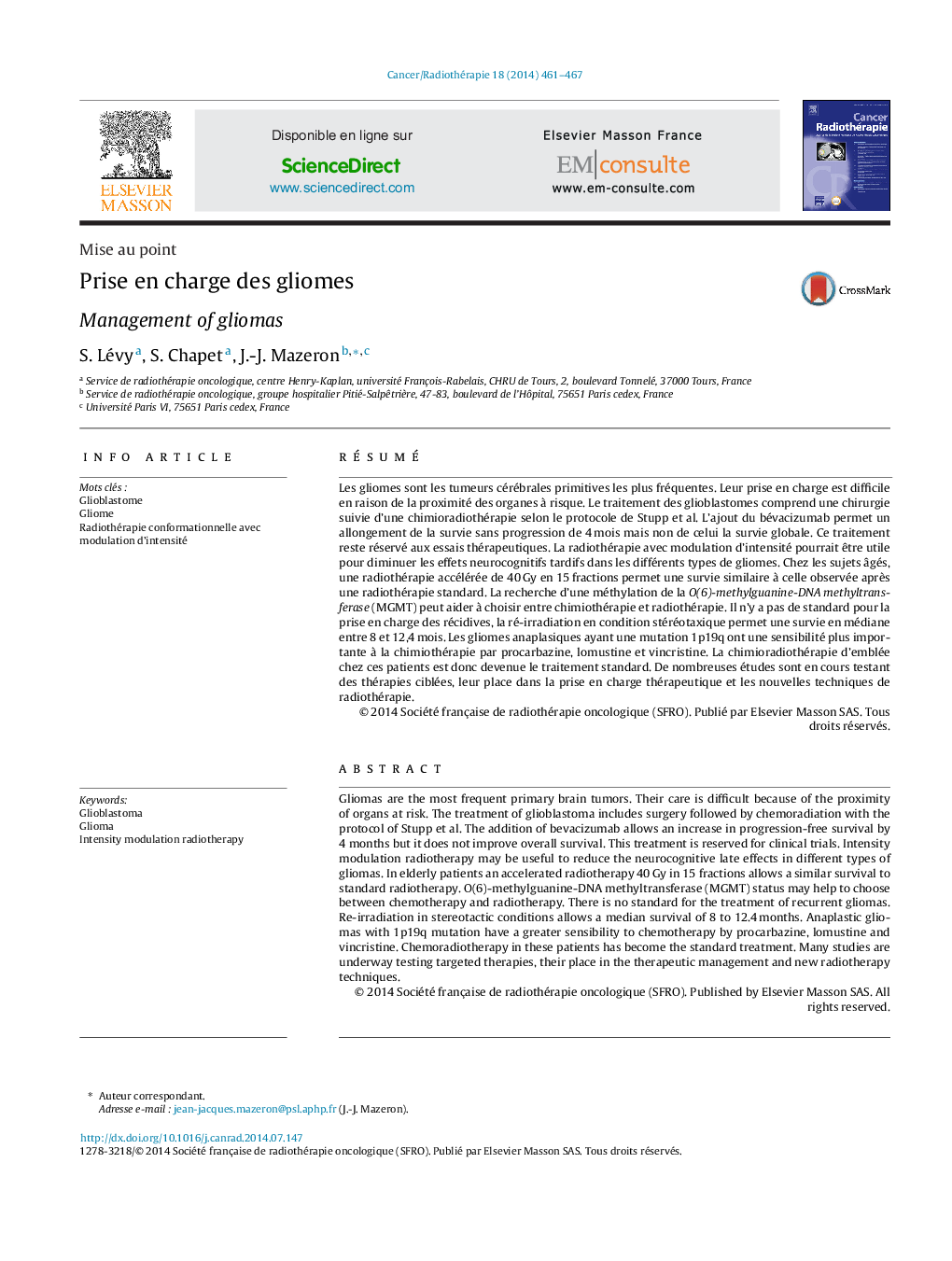| کد مقاله | کد نشریه | سال انتشار | مقاله انگلیسی | نسخه تمام متن |
|---|---|---|---|---|
| 2117707 | 1546734 | 2014 | 7 صفحه PDF | دانلود رایگان |
RésuméLes gliomes sont les tumeurs cérébrales primitives les plus fréquentes. Leur prise en charge est difficile en raison de la proximité des organes à risque. Le traitement des glioblastomes comprend une chirurgie suivie d’une chimioradiothérapie selon le protocole de Stupp et al. L’ajout du bévacizumab permet un allongement de la survie sans progression de 4 mois mais non de celui la survie globale. Ce traitement reste réservé aux essais thérapeutiques. La radiothérapie avec modulation d’intensité pourrait être utile pour diminuer les effets neurocognitifs tardifs dans les différents types de gliomes. Chez les sujets âgés, une radiothérapie accélérée de 40 Gy en 15 fractions permet une survie similaire à celle observée après une radiothérapie standard. La recherche d’une méthylation de la O(6)-methylguanine-DNA methyltransferase (MGMT) peut aider à choisir entre chimiothérapie et radiothérapie. Il n’y a pas de standard pour la prise en charge des récidives, la ré-irradiation en condition stéréotaxique permet une survie en médiane entre 8 et 12,4 mois. Les gliomes anaplasiques ayant une mutation 1p19q ont une sensibilité plus importante à la chimiothérapie par procarbazine, lomustine et vincristine. La chimioradiothérapie d’emblée chez ces patients est donc devenue le traitement standard. De nombreuses études sont en cours testant des thérapies ciblées, leur place dans la prise en charge thérapeutique et les nouvelles techniques de radiothérapie.
Gliomas are the most frequent primary brain tumors. Their care is difficult because of the proximity of organs at risk. The treatment of glioblastoma includes surgery followed by chemoradiation with the protocol of Stupp et al. The addition of bevacizumab allows an increase in progression-free survival by 4 months but it does not improve overall survival. This treatment is reserved for clinical trials. Intensity modulation radiotherapy may be useful to reduce the neurocognitive late effects in different types of gliomas. In elderly patients an accelerated radiotherapy 40 Gy in 15 fractions allows a similar survival to standard radiotherapy. O(6)-methylguanine-DNA methyltransferase (MGMT) status may help to choose between chemotherapy and radiotherapy. There is no standard for the treatment of recurrent gliomas. Re-irradiation in stereotactic conditions allows a median survival of 8 to 12.4 months. Anaplastic gliomas with 1p19q mutation have a greater sensibility to chemotherapy by procarbazine, lomustine and vincristine. Chemoradiotherapy in these patients has become the standard treatment. Many studies are underway testing targeted therapies, their place in the therapeutic management and new radiotherapy techniques.
Journal: Cancer/Radiothérapie - Volume 18, Issues 5–6, October 2014, Pages 461–467
